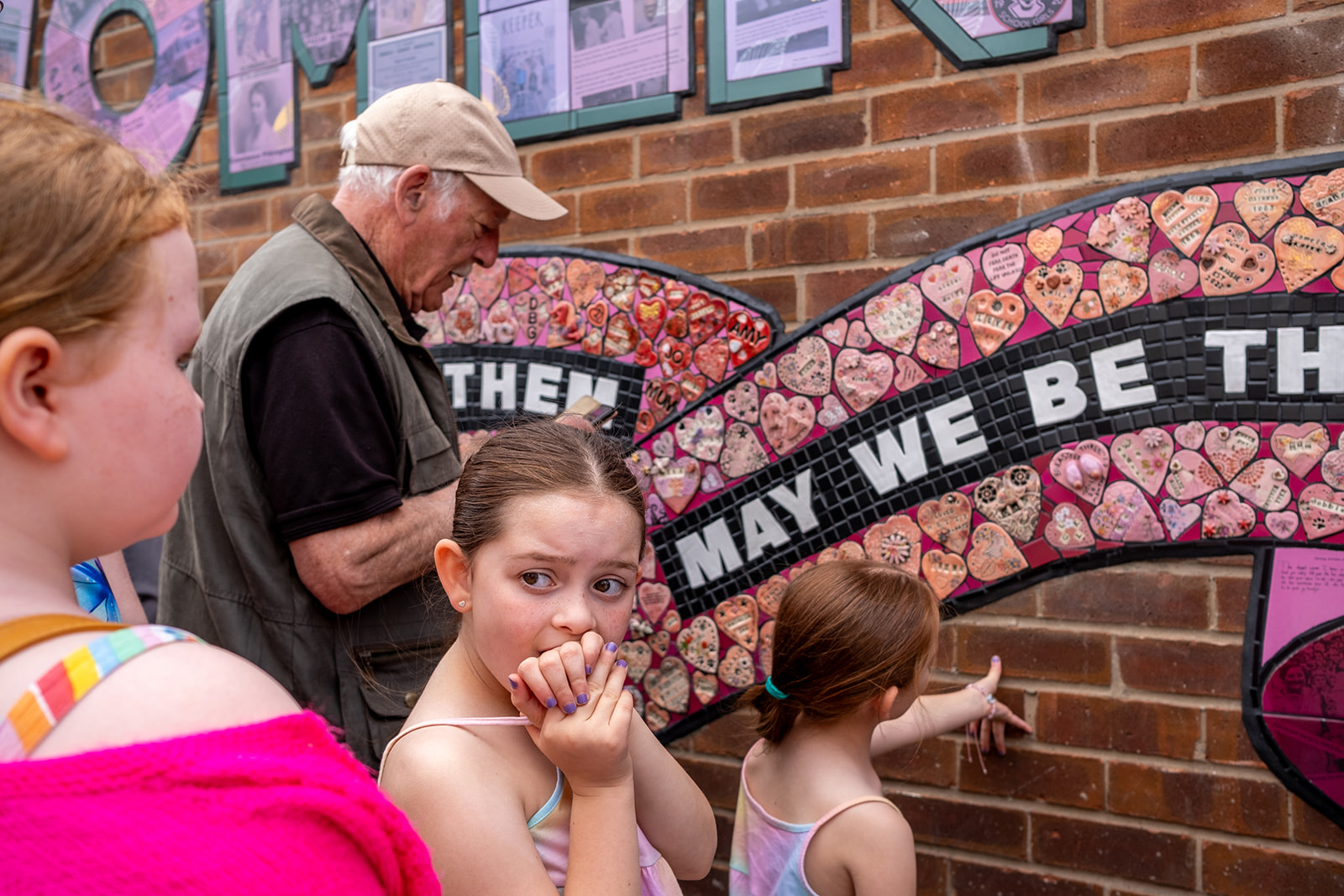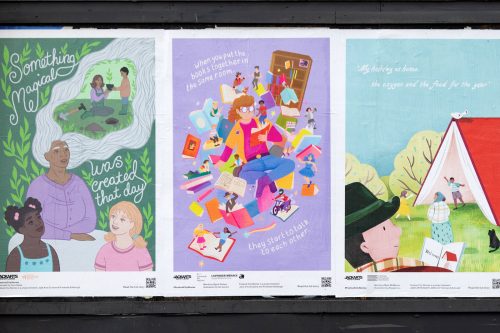Things we love
Carrie Reichardt – Strong Women – parr, St. Helens
The mere mention of public art can draw responses ranging from profound disinterest to outright hostility. En route from St. Helen’s Central station to the Connie Club in Parr the taxi driver didn’t stint, “The trouble is, you see, the Council or someone might fund something like that, on the side of a wall, but what happens in five years’ time? It looks like shit, that’s what… No, I don’t like it. They should be spending our money on better housing, not on bloody wall art or whatever it is.” It’s an understandable point of view. Often sited with little or no regard to its host community or neighbourhood. To many, public art installations are an out-of-kilter eyesore or, at best, baffling intruder.
It doesn’t have to be this way. Heart of Glass, the Merseyside based community arts organisation put socially engaged practice at the forefront of their many and varied commissions. Whilst the charity works to promote their – “participatory, interactive and collaborative by its very nature and informed by accessibility, inclusion, diversity and difference” – activities nationally, internationally and online, the Strong Women programme brings them back to a place that’s part of their origin story, namely St. Helens.
Running from March 1st 2023 to Dec. 31st 2025 Strong Women launches in Parr, to the East of St. Helens. After initial research trips in 2022, 2023 saw months of consultations and workshops with residents’ groups – including Parr Children’s Centre, The Connie Club, St. Mary’s Care Home and local Holy Spirit Catholic Primary school – whereby artist, activist and mosaic craftivist Carrie Reichardt navigated the wariness towards public art with aplomb. When we met at the unveiling, she recalled an early confab with a Parr local, “So what do you think the work should be? What do you want to say on this wall?” asked Reichardt. Quick came the reply, “’You Can Kiss My Fat Arse’, that’s what it should say.”
27.09.23
Words by





















